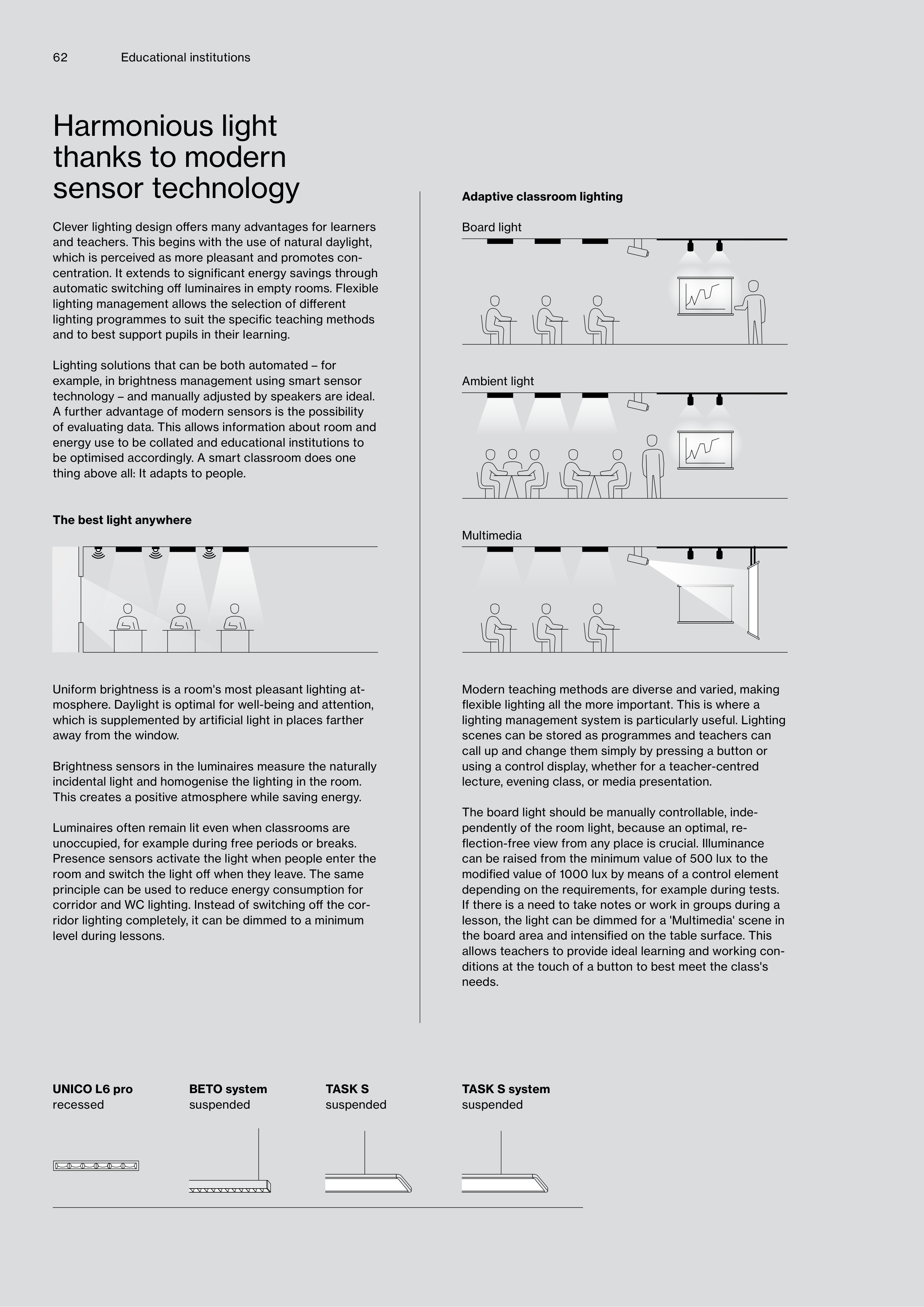recessed
suspended
UNICO L6 pro
TASK S
suspended
suspended
BETO system
TASK S system
62
Educational institutions
Modern teaching methods are diverse and varied, making
flexible lighting all the more important. This is where a
lighting management system is particularly useful. Lighting
scenes can be stored as programmes and teachers can
call up and change them simply by pressing a button or
using a control display, whether for a teacher-centred
lecture, evening class, or media presentation.
The board light should be manually controllable, inde-
pendently of the room light, because an optimal, re-
flection-free view from any place is crucial. Illuminance
can be raised from the minimum value of 500 lux to the
modified value of 1000 lux by means of a control element
depending on the requirements, for example during tests.
If there is a need to take notes or work in groups during a
lesson, the light can be dimmed for a 'Multimedia' scene in
the board area and intensified on the table surface. This
allows teachers to provide ideal learning and working con-
ditions at the touch of a button to best meet the class's
needs.
Harmonious light
thanks to modern
sensor technology
Clever lighting design offers many advantages for learners
and teachers. This begins with the use of natural daylight,
which is perceived as more pleasant and promotes con-
centration. It extends to significant energy savings through
automatic switching off luminaires in empty rooms. Flexible
lighting management allows the selection of different
lighting programmes to suit the specific teaching methods
and to best support pupils in their learning.
Lighting solutions that can be both automated – for
example, in brightness management using smart sensor
technology – and manually adjusted by speakers are ideal.
A further advantage of modern sensors is the possibility
of evaluating data. This allows information about room and
energy use to be collated and educational institutions to
be optimised accordingly. A smart classroom does one
thing above all: It adapts to people.
Uniform brightness is a room's most pleasant lighting at-
mosphere. Daylight is optimal for well-being and attention,
which is supplemented by artificial light in places farther
away from the window.
Brightness sensors in the luminaires measure the naturally
incidental light and homogenise the lighting in the room.
This creates a positive atmosphere while saving energy.
Luminaires often remain lit even when classrooms are
unoccupied, for example during free periods or breaks.
Presence sensors activate the light when people enter the
room and switch the light off when they leave. The same
principle can be used to reduce energy consumption for
corridor and WC lighting. Instead of switching off the cor-
ridor lighting completely, it can be dimmed to a minimum
level during lessons.
Board light
Ambient light
Multimedia
The best light anywhere
Adaptive classroom lighting







